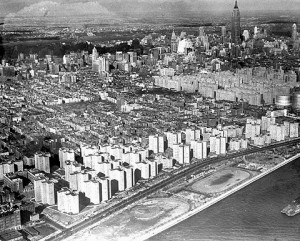In Michel Foucault’s set of lectures entitled ‘Society Must Be Defended’, the French philosopher delineates a shift in sovereignty that he sees as emblematic of neo-liberalism. Whereas previous incarnations of sovereignty let people live, and made them die, neo-liberalism is characterized by an inversion of this formula: it makes people live, and lets them die. This is central to Foucault’s concept of biopolitics, which charts “ the emergence of the idea of an internal war that defends society against threats born of its own body. The idea of social war makes, if you like, a great retreat from the historical to the biological, from the constituent to the medical” ( Foucault, 216). As the state increasingly tightens its control over the biological, over individual subjects with bodies, the concept of populations, and by extension, different populations emerges. This conceptual structure appears apt when viewing how capitalism deals with its peripheral elements through the conditioning of space. Urban planning facilitates the social life of certain groups; others, it needn’t worry about as much.
As we can see through examining Robert Moses’ urban planning initiatives, capitalist modes of governance attempt to locate productive citizenry and/or populations near economic centers and nodal points. Citizens who are deemed less productive are often pushed to the periphery, where access to amenities, goods, and services is more limited. Given the noxious overlap between race and class in the United States, these peripheral zones end up occupied by predominantly African-American and Latino-American inhabitants. The racialization of space ensues.
In spite of the fact that many urban planners thought that the high-rise public housing unit provided an opportunity to cheaply and efficiently house people, giving them a superior standard of living than that which they previously enjoyed, this logic has proved faulty time and time again. People exist in communities. These communities are constituted by families, by neighbors, and other surrounding people. In depositing people in high rise apartments in locations far afield, these communities are broken up. Moreover, high-rise projects often lack communal spaces, and thus residents have little to no contact with their neighbors. High-rise apartments are individuating spatial arrangements. If you remove the spaces and technologies by which people form political and social bonds, you also remove the potential for revolt and dissent. In this sense, Robert Moses and his high rise public housing can be thought of as a product of Le Corbusier’s ideas concerning the modern city. Cedar Lewisohn’s take on urban renewal is particularly apt:
The idea was a noble one, but by the time it trickled down to the masses, it translated to concrete jungles, cheaply made and badly designed housing projects, places of exclusion and isolation. Those involved in the pioneering graffiti of the 1970s were part of the first generation to grow up in this social architecture (87).
Yet the crisis in urban housing was not the only factor that led to the emergence of Graffiti as a grass-roots counter-cultural means of expression. There was a severe economic depression during the 1970s. Meanwhile, New York suffered a supposed ‘breakdown in authority’, where the crime rate increased rapidly between 1968–1982 .This constellation of factors paradoxically engineered a fertile ground for creative expression, where modern Graffiti was subsequently born.


I wish to show my passion for your generosity supporting those people that actually need guidance on in this study. Your real dedication to passing the message up and down ended up being extraordinarily interesting and have continually empowered girls just like me to achieve their pursuits. Your amazing important publication means a lot to me and substantially more to my office workers. Thanks a ton; from each one of us.